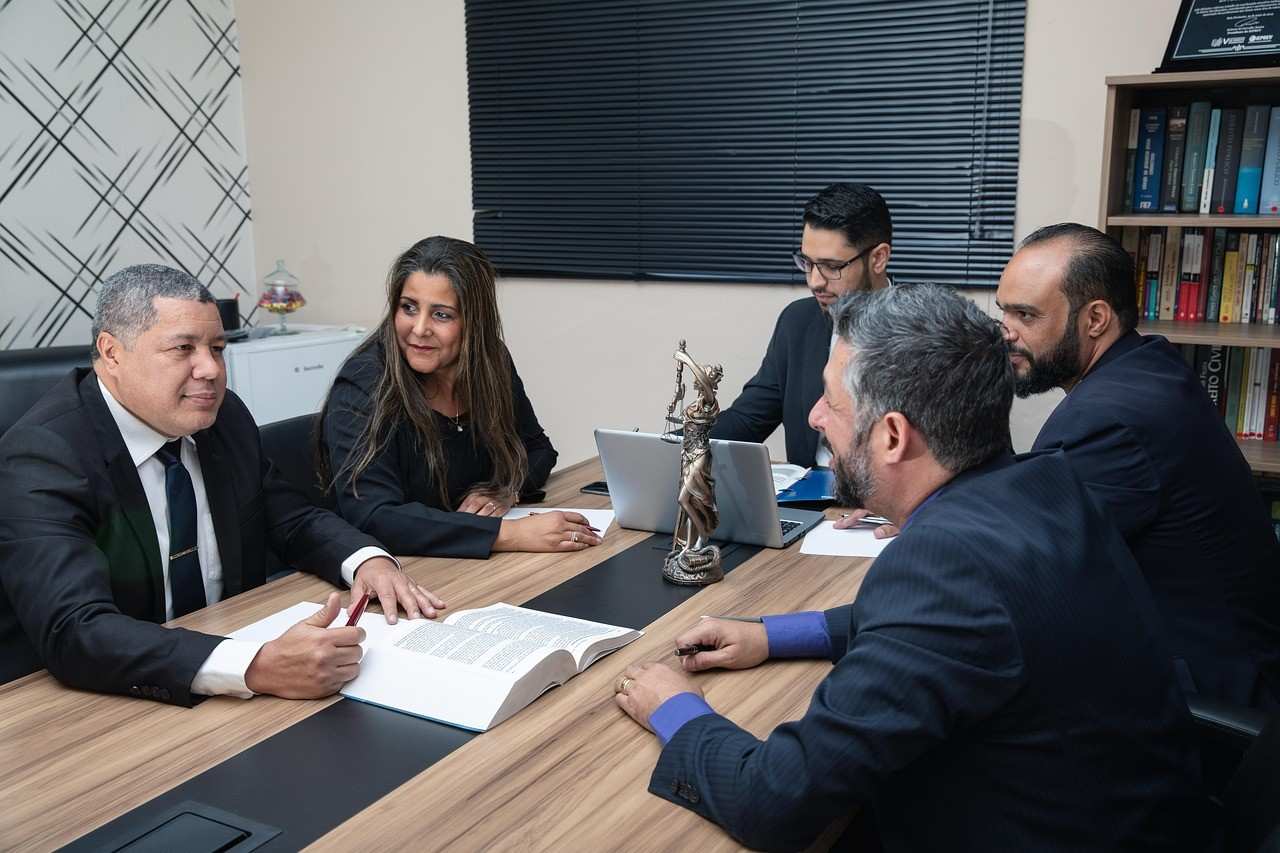If you’re building something new, chances are you’ve thought about patents. But let’s be honest: writing strong patent claims is hard. It takes time. It’s confusing. And if you mess it up? You leave your idea wide open for someone else to copy.
Why Patent Claims Matter More Than You Think
Most startups know they should file patents. But very few understand what actually gives a patent its power. It’s not the pretty certificate. It’s not the number of pages. It’s not even the technical drawings. It’s the claims.
Patent claims are the legal boundaries of your invention. They define what you own—and what others can’t copy.
They are the actual rules that competitors have to play by. And if your claims aren’t written clearly, strategically, and correctly, your patent is basically useless.
Your Claims Can Make or Break Investor Confidence
Investors look for defensibility. If you say you have a patent, they might smile. But if your claims are weak, narrow, or poorly written, that patent won’t help you in a negotiation or acquisition.
What serious investors want to know is: can this startup keep others out of their space? Can they protect their margins? Will a larger competitor be blocked from copying their core product?
The only way to answer yes is to have strong claims.
This is why having AI in the claim-writing process is so valuable. It gives you a more complete, strategic view of your invention.
It can suggest broader or tighter scopes. It can show you how small wording changes shift the strength of your protection. And it can do it fast—before you get into legal fees or filing deadlines.
That means you’re not just writing a patent. You’re building leverage.
Claim Structure Is Strategy, Not Just Syntax
Most people think claims are just about saying what the product does. But real patent strategy goes deeper.
How you structure a claim affects how easy it is to enforce. If your claims only describe surface-level features—like a UI layout or a specific integration—competitors can work around them by changing a few details.
But if your claims cover the logic, flow, or underlying architecture, they become much harder to avoid.

This is where AI becomes powerful. It doesn’t just rewrite what you tell it. It looks at the full stack of your invention—what it does, how it works, how the parts interact—and helps frame that in a way that blocks competitors more effectively.
You still need a real patent expert to guide the strategy. But AI gives you a smarter foundation, faster. It shows you the angles you might miss if you’re not deep in patent law.
Good Claims Help You Move Faster, Not Slower
Many founders think strong patents take forever to write. That’s only true if you’re starting from scratch every time. With AI, you can go from idea to claim draft in hours, not weeks.
And once you’ve got a solid draft, you can quickly test different variations. You can compare what happens if you claim the system versus the method versus the product.
You can see which approach gives you broader coverage without crossing legal lines.
This is real-time strategy. Instead of waiting weeks to hear back from a lawyer, you can make fast, informed decisions—right when it matters most.
If you’re iterating on your tech weekly (or daily), your patent strategy needs to keep up. Otherwise, you risk locking in protection for a version of your product that’s already outdated.
Claims Aren’t Just Defense—They’re a Business Weapon
Strong patent claims don’t just stop others from copying you. They help you control the narrative in your space. They shape how competitors build. They influence licensing deals, partnerships, even press coverage.
If your claims are tight and well-scoped, you can confidently say, “We own this approach.” That gives you the edge in sales conversations. It gives you leverage in investor pitches. It gives you a reason to charge more—or to keep others out entirely.
When your claims are clear, enforceable, and hard to work around, they become one of your most valuable business assets. But that only happens if they’re written with care, strategy, and speed.
AI helps you do that. It takes the heavy lifting off your plate. It helps you avoid blind spots. It gives your legal team a better starting point. And it gets you to strong claims faster—so you can move forward with confidence.
AI Can Read Your Tech Like a Patent Expert
When you’re building something new, especially in deep tech, there’s always a gap between what your product does and how to explain it clearly in legal terms.
Most founders live deep in the code, the architecture, or the data model. But patent language lives in a different world—one full of structure, legal precedent, and tightly controlled wording. AI bridges that gap.
AI doesn’t just read what your system does at a surface level. It processes the logic, function, and flow—almost like a technical reviewer—but with the rules of patent law baked in.
That means you get a draft of your claims that already thinks like a patent examiner. This gives you a massive head start, especially when time is tight and you’re trying to protect what’s new without losing momentum.
Understanding Context Beyond the Code
One of the most powerful things AI does is recognize context. Your invention isn’t just a feature or a line of code. It’s a system. A method. A new way of solving something.
Traditional attorneys often rely on conversations and notes to understand this context. AI tools, on the other hand, can take a direct feed of your architecture diagrams, your source code, or your technical spec and pull out what matters.
Not just the what—but the why and how.
This lets the AI focus the claims on the true differentiators. Maybe your edge is in how your data pipeline is structured. Maybe it’s in a unique way you handle user input, or an efficiency in your algorithm.
AI can spot those angles—even when you’ve buried them in a product description or GitHub comment.
When you’re moving fast, that kind of insight is priceless. It saves hours of back-and-forth. It turns messy technical detail into clear, protectable language.
Matching Claims to Product Roadmap
Another underrated strength of AI is its ability to sync with your vision. Patents shouldn’t only describe what exists today. They should also cover where you’re going.
With AI, you can feed in not just your current product, but also your future architecture or next-gen features. The system can help you write claims that are flexible enough to include those expansions—without crossing legal lines.
This is especially useful for startups still figuring out their final implementation. You may not know exactly which backend you’ll settle on. Or which ML model will perform best. But if your patent claims are too narrow, you’ll be locked in.

AI helps you explore what’s patentable across variations. It helps you frame your invention in broader terms, so your protection grows with your product.
That’s not just smart—it’s strategic.
Making It Easier to Collaborate with Your Legal Team
Even with great attorneys, founders often struggle to explain the nuances of what they’ve built. You might find yourself writing long emails, sketching diagrams, or sitting through hours of calls—just to get on the same page.
AI simplifies that. It lets you upload your own technical work directly. It processes that raw input and gives your legal team a structured, accurate, claim-ready draft.
Now, instead of starting from zero, your attorney is reviewing a high-quality draft that reflects your real invention. That cuts down on costs, rounds of revisions, and frustrating miscommunications.
And here’s where you win big: that saved time turns into faster filings. You’re weeks ahead of where you’d be in a traditional patent process. Which means you’re protecting your invention sooner—before someone else files something similar.
Creating an Internal Feedback Loop for R&D
This is a powerful move most startups don’t even realize is possible.
When AI reads your tech and outputs potential claims, it creates a mirror. You get to see how an outsider—trained in patent logic—interprets what you’ve built.
That forces clarity. It helps your team spot which parts of your invention are truly new and which parts are common or obvious.
This feedback loop is invaluable for R&D. If you see that the AI keeps focusing on a specific aspect of your system, that may be the piece with the most patent potential. If it ignores the flashy feature you thought was special, that’s a signal to re-evaluate your technical differentiation.
It’s not just about writing a better patent. It’s about building a smarter product strategy—one where IP and tech evolve side by side.
Helping You File at the Right Moment
AI also helps you understand when it’s the right time to file.
Sometimes founders jump to file early—before the invention is fully formed. Other times, they wait too long and risk losing patentability. AI helps solve this by generating claimable concepts as soon as your product hits the threshold of novelty.
You can run your code, flow, or architecture through the AI. If it can generate clear claims that stand on their own, you likely have enough to file. If not, you know to keep building. That clarity alone can save you thousands—and months of wasted effort.
Here’s How It Works (Without the Legal Jargon)
Most patent processes feel like a black box. You hand over your tech, wait for weeks, then get back a document full of legal terms that barely sound like what you actually built.
That’s not just frustrating—it’s risky. Because if the claims don’t match your invention, they won’t protect it.
When you bring AI into the picture, that process becomes much more transparent—and a lot more aligned with how real startups operate.
Turning Raw Product Knowledge Into Protectable Language
You already have everything the system needs: your codebase, your architecture diagram, your technical spec, or even just a clear explanation of how your system works.
The AI takes that raw material and begins translating it into the language of patent claims.
It doesn’t require you to speak in legal terms. You don’t need to change how you talk about your product.
Instead, the system adapts to you. It identifies how your invention functions, what it enables, and how it’s technically different from what already exists. Then it maps that understanding into the proper format for claim language.
This is critical. It means you don’t need to pause development or stop and rework documents just to “prep” for filing. You can keep building while the system works alongside you.
Helping You Visualize the Legal Structure of Your Invention
Here’s something most founders never get: a clear view of how their invention breaks down from a legal standpoint. That’s what AI gives you.
Once your inputs are processed, the AI doesn’t just dump a block of claim language. It shows you the structure. What’s the core system? What are the key components? Which elements are essential to patent, and which might be left out?

This is where the tool becomes a business asset. Because now you’re not just filing a patent. You’re understanding how your product maps to legal protection. You can see the skeleton of your IP, and decide how to shape it.
This makes your patent something you can actually talk about with investors, partners, or buyers—because now you understand it.
Speeding Up the Review and Approval Workflow
The first draft is only the beginning. Once the AI generates a structured, accurate claim set, it’s sent to a real patent attorney. But this review process is way faster than traditional methods.
Because the AI has already handled the technical-to-legal translation, your attorney isn’t starting from scratch. They’re optimizing, refining, and strengthening what’s already there.
They’re flagging edge cases or making strategic decisions about scope. This layered approach—AI first, human second—cuts weeks off the normal timeline.
And more importantly, it keeps you in the loop. You’re not waiting blind. You’re reviewing and responding in real-time. If something needs changing, it’s easy to adjust and rerun the process.
This level of agility is rare in patent work—but it’s essential for fast-moving teams.
Making Protection Part of the Build Process
One of the smartest things you can do as a founder is stop treating IP as an afterthought. With AI-powered claim generation, patents become part of the way you build.
Every time you make a technical breakthrough, you can check whether it’s protectable. You can generate a draft claim. You can file provisionals early, and improve them over time. You can align your legal strategy with your product roadmap.
This doesn’t just save time. It gives you an IP engine. One that scales with your growth.
And it gives you flexibility. If you pivot, or ship a new feature, you can quickly spin up new protections. You don’t lose weeks chasing legal help or re-explaining your system from scratch.
You stay in control of your invention—every step of the way.
It’s Like Autocomplete for Patent Claims (But Smarter)
Every founder has faced the blank page problem. You know what your product does. You know it’s new. But when it’s time to turn that into legal claim language, everything stalls.
The structure is unfamiliar. The wording feels off. And one wrong phrase could weaken your whole application.
AI fixes that by guiding you as you go. Think of it like autocomplete, but trained not just on English—trained on thousands of real patents and successful filings. It understands how claims are built, how they flow, and how they hold up under scrutiny.
This means you’re never starting from zero. You’re starting with momentum.
Helping You Avoid Costly Dead Ends
A big risk in traditional claim writing is going down the wrong path. Maybe you start describing your product based on how users interact with it, when what really matters is how the data flows underneath.
Maybe you’re focused on a high-level function, when the true novelty is in a low-level system behavior.
AI catches that early. As you start entering your invention details, it nudges you toward stronger framing. It suggests language that highlights technical differences, not just marketing ones.
It warns you if you’re writing a claim that’s likely to be too broad, or too vague, or already well-covered in other filings.
These nudges are tiny in the moment—but huge in terms of outcome. They help you avoid spending months and thousands of dollars on claims that were never going to hold up. And they do it before you hit the submit button.
Turning Technical Detail Into Legal Strength
Startups often struggle with how much detail to include in their claims. Too much, and you lock yourself into one specific implementation. Too little, and the claims become unenforceable.
AI helps balance that. It recognizes what details give your invention legal strength—and which ones are just noise. It adapts its suggestions based on how your invention is structured.

If you’re dealing with edge computing, distributed data, or real-time processing, the AI knows how to express those ideas clearly, but with legal punch.
You still decide what to include. But instead of guessing, you’re guided. You see how different phrasing changes the strength of your protection. You learn how to write smarter, not just faster.
And over time, that builds your IP muscle. You start thinking in claims. That mindset shift changes how you build and ship.
Making Patent Writing Collaborative, Not Isolated
One thing that surprises many founders using AI-assisted tools is how much easier collaboration becomes. When claims are being suggested in real-time, product teams and legal teams can sit together and explore possibilities on the spot.
You don’t need a separate legal session to figure out how to describe a feature. You can work through it live, with the AI showing you what a claim would look like if framed one way versus another.
This turns the process into something interactive—where product thinking and legal thinking evolve together.
That kind of real-time collaboration used to be impossible. Now, it’s standard. And it leads to stronger claims, better product alignment, and faster decisions.
Replacing Stress With Structure
Writing patent claims without support is like walking into a courtroom with no script. It’s stressful, uncertain, and usually leads to errors. But when AI is helping guide the process, the stress drops.
You’re still in control. You still decide the strategy. But you’re not guessing. You have a structure to lean on. And every time you use it, you get faster. More confident. More precise.
That confidence matters. Because when it’s time to raise funding, negotiate a deal, or face a competitor, you’ll know your IP isn’t just filed—it’s strong, and it’s built right.
You Stay in Control the Whole Time
One of the biggest fears founders have when it comes to patents is losing control.
Traditional patent processes feel like handing your invention off to someone else—someone who may not fully understand it, and who disappears for weeks before coming back with a document you barely recognize. That disconnect is frustrating. And more than that, it’s risky.
With AI-powered patent tools, that dynamic changes completely. You don’t just hand things off.
You stay in the loop from the first draft to the final filing. The system works with you, not around you. That level of visibility transforms the experience—and makes your patent strategy far more effective.
Shaping the Language Around Your Real Product
When you’re using AI tools, every word of the claim is generated based on your input. That means the language stays grounded in your actual system, your architecture, and your thinking.
You can spot when something feels off and correct it immediately. You’re not guessing at how your invention is being interpreted—you’re watching it unfold.
This gives you a kind of alignment that’s rare in legal work. You see your own ideas reflected back at you, but framed in a way that’s legally meaningful. If something is missing, you can adjust your input.
If something feels too narrow or too vague, you can regenerate different approaches. You don’t have to wait for someone else to do it. You can iterate in real time, like you would with your product.
That’s not just more efficient—it’s empowering. You’re not outsourcing your thinking. You’re enhancing it.
Controlling the Timing, Not Just the Output
In fast-moving startups, timing is everything. A new feature might launch next week. A competitor might file something similar tomorrow. Waiting weeks for a legal review just doesn’t cut it.
With AI-assisted patent workflows, you’re able to move on your own schedule. If you need to generate claim language today, you can.
If you want to explore filing a provisional before a product demo, you don’t have to wait for attorney availability. The system meets your pace—without cutting corners.
And because human review is still part of the process, you’re not sacrificing quality. You’re just controlling when the work happens, and how quickly it moves through.
This flexibility gives you a major edge. You can protect innovations at the exact moment they’re ready. Not a week late. Not a month later. Right when it matters most.
Using Your Insight to Strengthen Legal Strategy
AI tools don’t replace your insight—they amplify it. You know what makes your product different. You understand your market, your tech stack, your roadmap.
When you use that knowledge inside a guided, AI-powered system, you help shape the patent in ways no attorney ever could alone.

You can steer the claims toward what matters most for your business. If your advantage is speed, you can emphasize that. If it’s integration, security, or architecture, the system helps you bring that to the forefront.
You don’t need to learn how to write legally structured claims. You just need to know your product—and the AI takes care of the heavy lifting.
The result is a claim set that actually aligns with your business goals. Not just technically accurate. Not just legally clean. Strategically strong.
And because you’re part of the process from day one, the outcome always feels like yours. Not someone else’s interpretation of your work.
Owning the Strategy, Not Just the Documents
There’s a difference between filing a patent and owning your patent strategy. Most founders do the first. Very few do the second. But AI changes that.
When you’re involved in shaping the claims, seeing the structure, and making real-time decisions, you start to see how each filing fits into the bigger picture.
You don’t just protect features—you protect positions. You identify how your IP builds over time. You start thinking about how this filing supports your funding, your partnerships, your valuation.
This level of ownership is what separates founders who file patents from founders who leverage them.
And it all starts with staying in control.
Wrapping it up
If you’re building something new, bold, or valuable, you need protection. Not eventually—now. The problem is, traditional patent processes just don’t match the speed or rhythm of modern startups. They’re slow, expensive, and full of friction.

